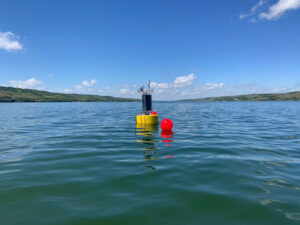Thermo Orion Star A214 Benchtop pH/ISE Meter
Features
- Displays pH, mV, RmV, ISE and temperature readings using Orion waterproof BNC electrodes
- AUTO-READ function alerts user and locks stable readings on backlit LCD screen
- USB and RS-232 ports allow easy data transfer of up to 2000 time-stamped data points
- Free ground shipping
- Expedited repair and warranty service
- Lifetime technical support
- More
Overview
The Thermo Orion Star A214 benchtop pH/ISE better is the ideal choice for any lab. The informative, backlit display shows pH, mV, RmV, ISE and temperature readings along with electrode status, time, date, sample ID, user ID and calibration points. For advanced users, features such as stability and averaging choices provide additional options. The meter is easy to set up and use while providing reliable measurement of pH and ionic concentrations for quality control and general analysis applications. Automatic pH calibration or 1 to 5 point manual calibration for pH and direct ion measurement ensures accuracy even at extremes of concentration.
Easy Integration
Thermo Orion Star A210 series benchtop meters provide a large storage capacity for time-stamped data points, which can be conveniently uploaded to a PC through the meter's USB and RS-232 ports. Complimentary data analysis software allows users to quickly view and manipulate data. Accuracy can be ensured through 5 point calibration and calibration editing features.
Benefits
- AUTO-READ function alerts user and locks on-screen readings when stable
- Up to 5 point pH calibration with automatic recognition of USA/NIST and DIN buffers
- Up to 5 point ISE calibration with timed end point, linear point-to-point, non-linear selectable auto-blank and low-concentration range stability features
- Calibration editing allows user to fix calibration errors without complete recalibration
- USB and RS-232 ports to upload data and update included data analysis software
- Non-volatile memory holds up to 2000 time-stamped data points
- Electrode arm and newly-designed probe holder to place probes into samples
- Universal power supply or battery power option
- Interface supports English, Spanish, French, Italian, German and Chinese languages
- IP54-rated splashproof housing
- 3 year meter warranty"
- pH
- Range: -2.00 to 20.00
- Resolution: 0.1, 0.01, 0.001
- Relative Accuracy: +/-0.002
- Calibration Points: Up to 5
- mV/RmV
- Range: +/-2000.0 mV
- Resolution: 0.1 mV
- Relative Accuracy: +/-0.2mV or 0.05%, whichever is greater
- EH ORP Mode: Yes
- ISE
- Range: 0 to 19999
- Resolution: Up to 3 significant figures
- Relative Accuracy: +/-0.2 mV or +/-0.05%, whichever is greater
- Units: ppm, M, mg/L, %, ppb, none
- Calibration Points: Up to 5
- Calibration Editing: Yes
- Calibration Features: Timed end point, linear point to point, non-linear selectable auto-blank, low concentration range stability
- Temperature
- Range: -5 to 105 C
- Resolution: 0.1
- Relative Accuracy: +/-0.1 C
- Offset Calibration: 1 point
- Datalogging
- Number of Points: 2000 with time and date stamp
- Log Function: Manual, ready (AUTO-READ), timed
- Log Edit: Delete lindividual points, group of points or all
- General
- Display: Backlit LCD
- Inputs: pH Electrode - BNC, ATC Probe - 8-pin mini-DIN
- Outputs: RS-232, USB
- Power Adapter: Universal AC, 100-240 VAC
- Battery Power: 4 AAs, 800 hrs life
- Environmental Requirements: 5 to 45 C and 5 to 85% relative humidity, non-condensing
- Regulatory and Safety: CE, TUV 3-1, FCC Class A
- IP Rating: IP54, splashproof and dustproof
- Warranty: 36 months (from date of purchase)
In The News
Ocean acidification: University of Washington's giant plastic bags help control research conditions
With oceans becoming more acidic worldwide, scientists are getting creative in designing experiments to study them. For example, one group at the University of Washington is using giant plastic bags to study ocean acidification. Each bag holds about 3,000 liters of seawater and sits in a cylinder-like cage for stability. The group at UW, made up of professors and students, is controlling carbon dioxide levels in the bags over a nearly three-week period, during which they are looking at the effects of increased acidity on organisms living near the San Juan Islands. “These mesocosms are a way to do a traditional experiment you might do in a lab or classroom,” said Jim Murray, professor of oceanography at the University of Washington.
Read MoreNOAA Alaska buoy network to monitor North Pacific ocean acidification
National Oceanic and Atmospheric Administration scientists detected signs of ocean acidification in the waters that hold the vulnerable and valuable fisheries of the North Pacific off the coast of Alaska, but they only had a snapshot of the action. “We know that in this place were important commercial and subsistence fisheries that could be at risk from ocean acidification,” said Jeremy Mathis, a NOAA Pacific Marine Environmental Laboratory researcher and professor at the University of Alaska Fairbanks. To understand how ocean acidification affects the North Pacific, NOAA scientists created a mooring network that collects constant in situ data on parameters contributing to acidification. They hope it will reveal seasonal trends and patterns left out by their snapshots.
Read MoreCombating Water Insecurity in Saskatchewan with Real-Time Data
The prairies of Saskatchewan can be described as one of the least water-secure parts of Canada, making water quality monitoring essential for informed resource management in a region already facing water insecurity. While natural physical properties worsen some of the poor water quality conditions in the region, others are connected to land use. Having grown up spending summers on the shores of Lake Huron, Helen Baulch, an associate professor at the School of Environment and Sustainability at the University of Saskatchewan , has always been dedicated to the protection of water resources. Looking back fondly at her childhood playing along the shore, Baulch also recalls the invasion of quagga mussels during her teenage years and watching the lake change as a result.
Read More



















